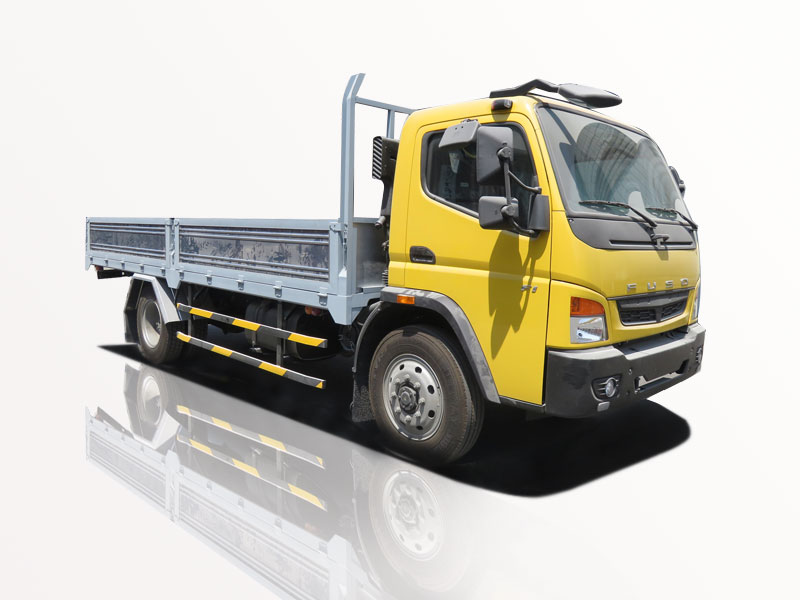In the world of construction, landscaping, fire control, and dust suppression, water trucks play a vital role. However, to optimize their performance, many operators find that a high-pressure upgrade is essential. This guide will delve into the importance of these upgrades, how to implement them, and tips on maximizing efficiency and effectiveness.
Understanding Water Trucks
A water truck is a specialized vehicle designed for transporting and distributing water for various applications. The most common uses include dust suppression, construction site support, landscaping, and agricultural watering. Standard water trucks operate using low-pressure systems, which may not be adequate for certain tasks.
Types of Water Trucks
- Standard Water Trucks
- Tankers for Fire Suppression
- Dust Control Trucks
- Watering Trucks for Agricultural Use
Why Consider a High-Pressure Upgrade?
Upgrading to a high-pressure system can significantly enhance a water truck’s performance. Here are some compelling reasons to consider this upgrade:
Increased Efficiency
High-pressure systems can cover larger areas quickly, reducing the time and resources spent on water distribution. This is particularly beneficial on construction sites or during landscaping projects where time is of the essence.
Improved Soil Penetration
High-pressure water systems can penetrate the soil more effectively, making them invaluable for agricultural operations and landscaping. This results in better hydration of the soil and improved plant growth.
Enhanced Dust Control
For construction and mining operations, controlling dust is crucial for safety and compliance with regulations. High-pressure systems can more effectively manage dust suppression, keeping the air cleaner and safer for everyone on-site.
Key Components of a High-Pressure Upgrade
To undertake a high-pressure upgrade, several components need to be properly selected and installed.
Pump Selection
The pump is the heart of a high-pressure water system. Considerations should include flow rate, pressure rating, and compatibility with existing water truck systems.
Types of Pumps
- Gear Pumps
- Diaphragm Pumps
- Centrifugal Pumps
- Positive Displacement Pumps
Hoses and Fittings
Upgrading to high-pressure hoses and fittings ensures safety and reliability during operation. Ensure that the materials can withstand the increased pressure without risk of leaks or bursts.
Water Tank Modifications
Some upgrades may require modifications to the water tank. Ensure compatibility with higher pressures, and consider adding reinforcement if necessary.
Installation Process for High-Pressure Upgrade
Installing a high-pressure system involves several crucial steps, which we’ll explore in detail.
1. Assess Current Equipment
Before beginning any upgrades, assess the capabilities and conditions of your current water truck. This will help identify what parts need replacement or modification.
2. Select Components
Based on your assessment, choose the appropriate high-pressure pump, hoses, fittings, and any necessary modifications for the tank. Consult with suppliers for expert advice.
3. Remove Existing Components
Carefully remove old components while taking care not to damage remaining parts. Document the process for future reference.
4. Install New System
Follow the manufacturer’s guidelines to install the new pump, hoses, and fittings. Ensure a secure fit to prevent leaks.
5. Test the System
Once installed, conduct thorough testing under controlled conditions to check for leaks and assess performance. Make adjustments as needed.
6. Training and Safety Measures
Train operators on the new system to ensure they understand its capabilities and limitations. Implement safety protocols to prevent accidents.
Practical Tips for Dialing In Your High-Pressure System
Regular Maintenance
Regularly maintain the high-pressure system to ensure optimal performance. This includes cleaning filters, checking hoses for wear, and verifying that the pump is functioning correctly.
Monitor Performance
Keep track of the water distribution rates and pressure levels. This data can help assess the efficiency of the upgrade and guide further modifications if necessary.
Compatibility Checks
When replacing parts or adding new components, ensure they are compatible with existing systems to avoid operational issues.
Cost Considerations for High-Pressure Upgrades
The cost of upgrading a water truck to a high-pressure system can vary widely based on several factors:
Components and Labor
| Item | Average Cost |
|---|---|
| High-Pressure Pump | $500 – $2,500 |
| Hoses | $200 – $1,000 |
| Fittings | $100 – $500 |
| Labor Costs | $75 – $150/hour |
Overall Investment Plan
When planning the budget for your upgrade, it’s essential to consider both initial costs and potential savings generated through improved efficiency. A well-calculated investment can pay off in no time.
Environmental Considerations
Water usage is a crucial topic, especially in drought-prone areas. A high-pressure upgrade can optimize water use, making it more effective while reducing waste. Efficient water distribution promotes environmental sustainability:
Efficient Water Use
By maximizing penetration and coverage, high-pressure systems can use less water while achieving better results than traditional low-pressure systems.
Recycling Water
Consider implementing a water recycling system to complement your high-pressure setup, further reducing environmental impact.
Frequently Asked Questions
1. Can any water truck be upgraded to a high-pressure system?
Not all water trucks are suitable for high-pressure upgrades. Assessing the overall condition and design of the truck is crucial before proceeding.
2. How long does a high-pressure upgrade take?
The duration of the upgrade depends on the complexity of the installation and the availability of required components. Typically, it can take several hours to a few days.
3. What are the dangers of operating a high-pressure water system?
The primary dangers include hose bursts, improper fittings, and operator misuse. Proper training and regular maintenance are essential to mitigate these risks.
4. Is a high-pressure system worth the investment?
In most cases, yes! The increased efficiency and effectiveness of high-pressure systems can lead to significant cost savings and improved operations.
5. How often should I maintain my high-pressure system?
It’s recommended to perform routine maintenance every few months or after heavy use, checking for any signs of wear, leaks, or reduced performance.
6. Are there any regulations regarding water usage for construction sites?
Yes, local regulations may impose limits on water usage, especially in drought-prone areas. Be sure to check with local environmental authorities to ensure compliance.





